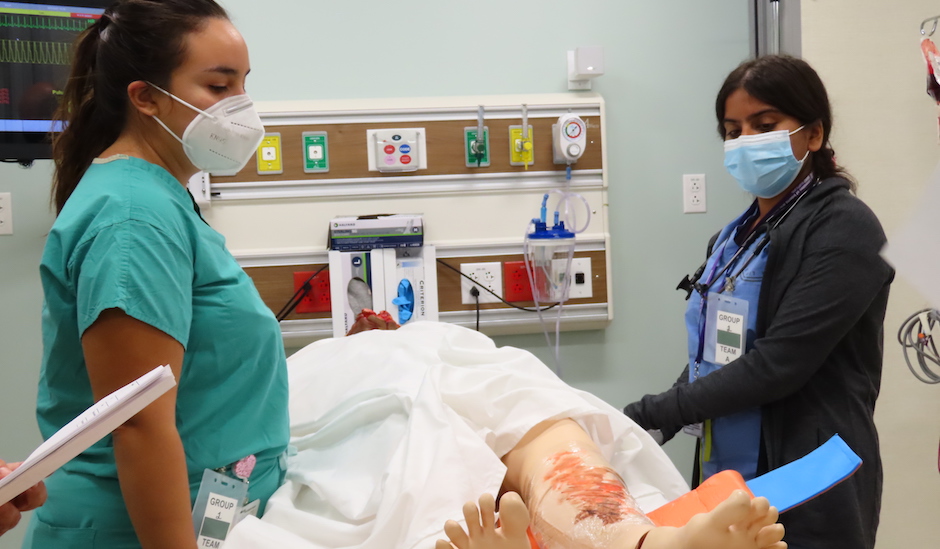Working in the emergency department (ED) means being ready for any kind of case at any given moment—whether trauma, gastrointestinal ailments, pediatric illness, heart attacks, overdoses, infectious diseases, or a pandemic like COVID-19.
In 2018, the University of Miami/Jackson Health System Emergency Medicine Residency Program teamed up with the Simulation Hospital Advancing Research and Education (S.H.A.R.E.™) to launch a specialized simulation curriculum.
Dr. Jeffrey Groom, executive director for special projects at S.H.A.R.E.™, coordinates the initiative with emergency physician Dr. Kelly Medwid, core faculty and simulation director for the competitive three-year residency.
“Our monthly simulation days allow our faculty to translate the most difficult and unusual cases and turn them into a simulation,” says Dr. Medwid, who works closely with a team of UM/Jackson medical faculty and S.H.A.R.E.™ staff to develop realistic cases and skills scenarios for the residents to tackle. “It allows our residents to work through complex medical conditions and procedures using the most advanced, state-of-the-art simulation equipment. It is one of our favorite ways to learn and optimize our teamwork skills.”
To date, about 80 residents have cycled through the hands-on program at S.H.A.R.E.™, a comprehensive simulated hospital that includes operating rooms, clinics, wards, an ICU, and a six-bed ED. In the first-floor ED, small groups of residents provide care to multiple simulated patients. In the upstairs labs, they practice common as well as rare life-saving procedures. During November, for example, they covered cricothyrotomy, foreign body removal from the ear, and the Epley maneuver for positional vertigo. “Sometimes we’ll do chest tubes or lumbar punctures,” adds Dr. Medwid.
They also learn to perfect “rapid cycle” situations, like advanced cardiac life support and pediatric advanced life support. “Today they’re doing adult tachycardia, finding the ACLS algorithm and really knowing it to a T,” explains Dr. Medwid.
Debriefing by faculty takes place after each simulation to allow time for reflection and questions in order to fully understand a topic. Dr. Medwid, fellowship-trained in simulation education at New York University, says residents praise the authenticity of their experience at S.H.A.R.E.™ and gain confidence from it.
“The resources, both physical and personnel, are wonderful. The beautiful space, the high-fidelity mannequins and standardized patients, the monitors, and the expertise of everyone who’s here help us perfect each of the cases and simulations,” says Dr. Medwid. “And Dr. Groom gives me so many different ideas for our monthly sessions.”
Another benefit of this unique partnership is the participation of SONHS nursing students in the emergency medicine simulations. “I can’t express how amazing it is to have the school’s nursing students be part of the team for ideas and for helping with the realism,” says Dr. Medwid.
Dr. Groom agrees. “The collaboration has been great for our students and for the emergency medicine residents,” he says. “We should all be training together from the start of the educational process because after graduation it’s one big health care team.”

